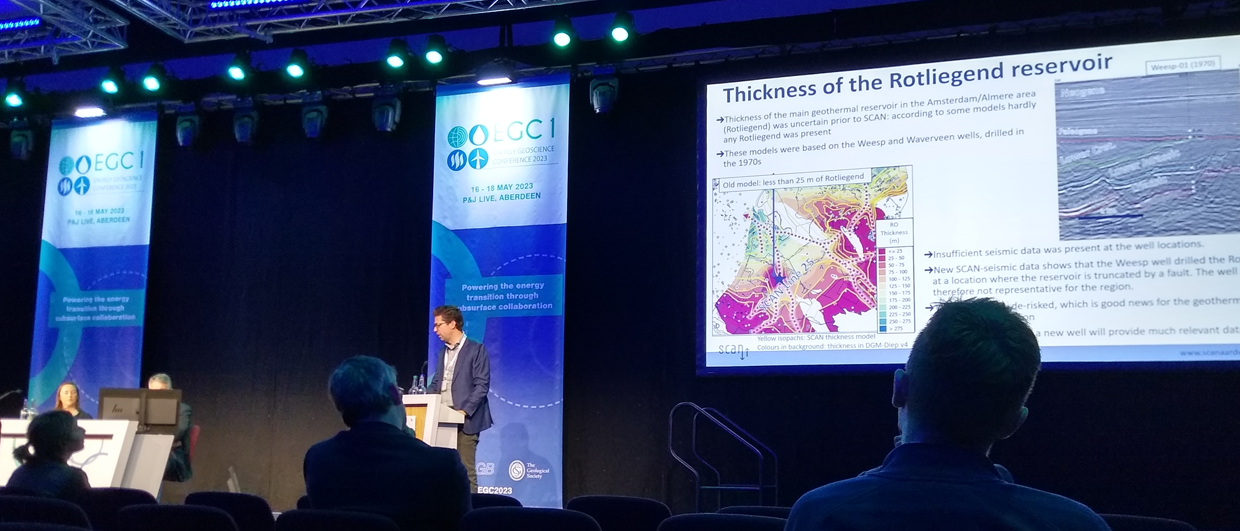When the plenary keynotes concluded on the first day of the Energy Geoscience Conference (EGC1) in Aberdeen last week, a very interesting thing happened.
The room, which had been pretty full with probably around 500 attendees, emptied almost completely. A long line of people wanting to move to either the CCS or Geothermal sessions that were about to kick off next door formed in the room where the more petroleum-related talks were about to continue.
The queue was so long that the first presenter still saw the back end of the line when he started his talk. It was the thing that many participants had noticed and was talked about a lot during the remainder of the conference.
There is only one conclusion that is justified here: geoscientists are embracing the energy transition, at the expense of oil and gas. Maybe next time, the organisers will make sure that it’s either the geothermal or CCS session that continues in the biggest lecture theatre of the venue…
At the same time, it must be said that some of the talks in the petroleum session were not particularly new. Why did Andrew Hurst give an overview of his sand injectite work over the past few decades, whilst he is semi-retired and has an enthusiastic successor in Matt Brettle who could have given a more current overview of what the sand injectite group is up to at the moment?
Despite the fact that petroleum geology was not popular, the organisation of the conference should be commended to accommodate talks on oil and gas. It is important to realise that there is practically no deep geothermal energy produced in the UK yet, and there is no CO2 injection taking place either.
In addition, as Nick Richardson outlined in his talk when he announced the first results of the CCS licensing round, the natural decline in domestic oil and gas production on the UKCS even exceeds IPCC’s 1.5 degree scenario. In other words, it is even justifiable to continue production and invest in new projects on the UKCS in order to reduce dependency on more carbon-intense imports.
Maybe a bit more positivity?
So, based on the attendance of the petroleum-related talks at EGS1, it is clear that the mood in oil and gas is sombre. The same sombre tone was the narrative of some talks about the big challenges ahead when it comes to reducing our CO2 footprint. But there is reason to be optimistic too. When looking at the UK’s carbon emissions, Gideon Henderson showed these have come down from 900 million tonnes in 1990 to around 500 million tonnes at the present day.
Projecting that trend towards 2050, the UK will almost be Net Zero by that time. In my view, and in the light of the current greening of our energy system, is there not some room for the conclusion that we are on the right track?
And coming back to oil, during the evening talk of the Energy Group Dinner, managing director of the BGS Karen Hanghøj showed an interesting graph of the main metals and minerals required in the energy transition. The substance that will see the highest growth in demand when projected to 2050 is graphite. The World Bank estimates that demand will be around 500% in comparison to 2018, closely followed by lithium.
Whilst there is a lot of talk on lithium and other critical elements, there seems an overall unawareness on graphite. Karen did not mention it either. Maybe it is is because graphite is a by-product of oil refining, as Ed Conway explained so well in this long thread on Twitter last year?
We have to change the energy system completely, and hopefully geothermal and CCS will have some tangible case studies to present at EGC2 in a few years time. But, there is still a place for oil and gas too, a more essential place than it currently occupies in the energy transition narrative. That is why the organisers of EGC1 need to be recognised for putting oil and gas on the programme of the conference and that is why events like this are good; it brings people from all aspects of the subsurface energy landscape together. It is essential for an informed debate.

